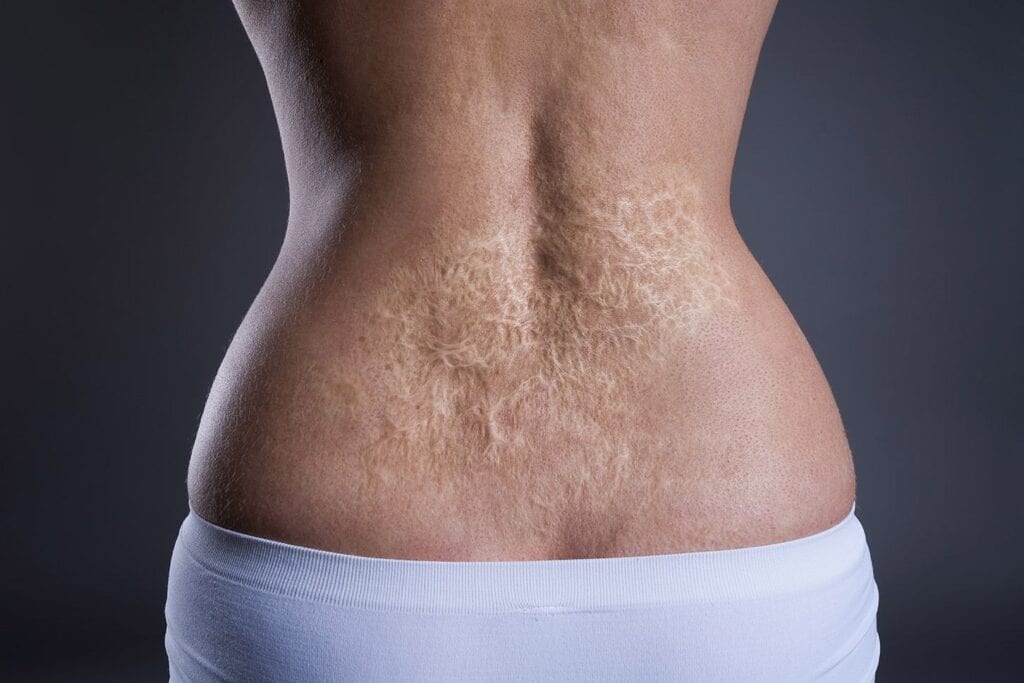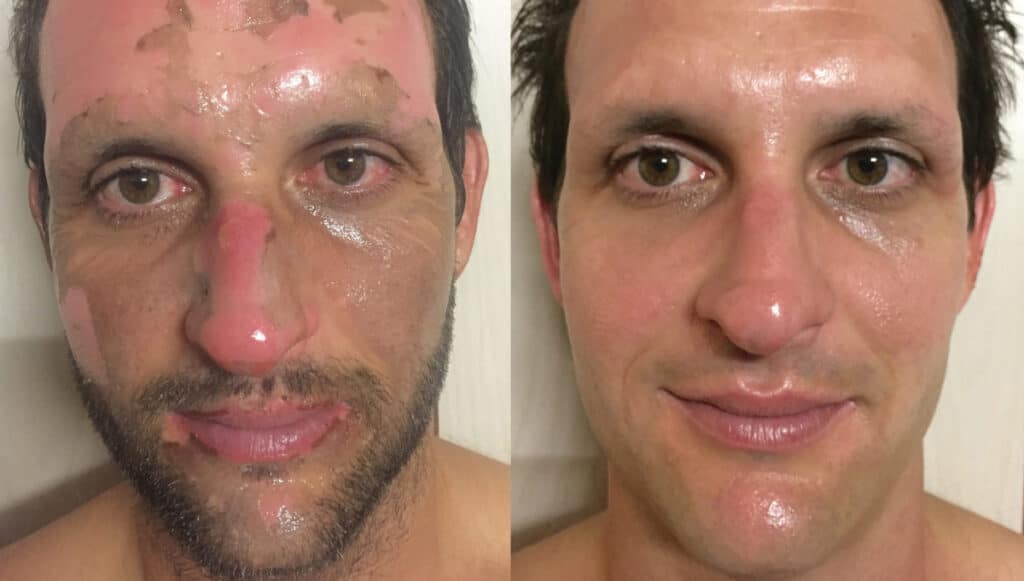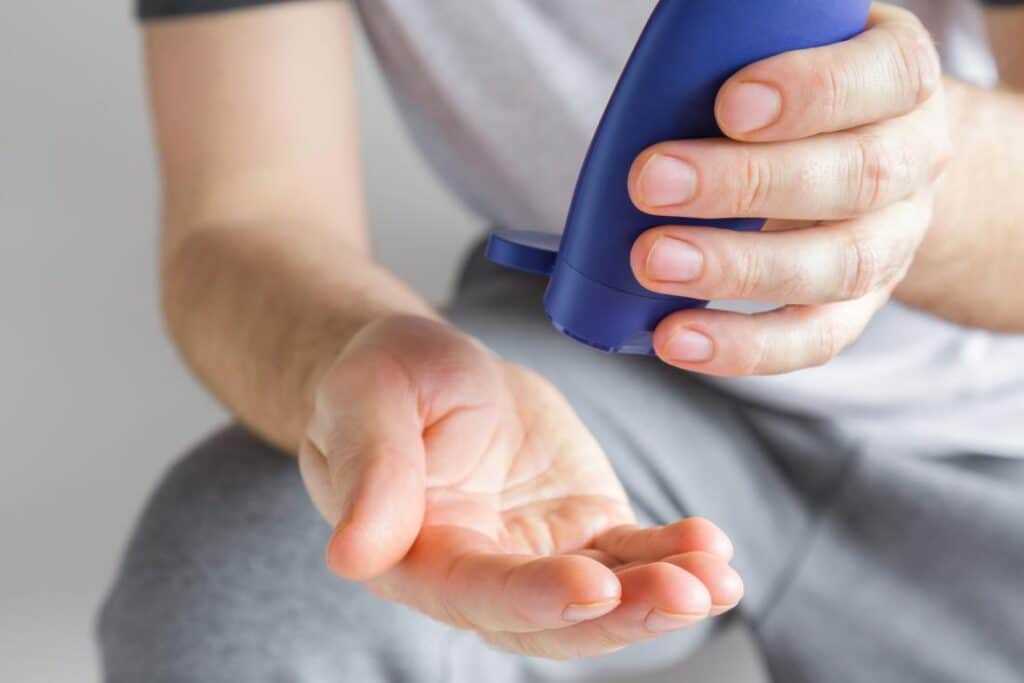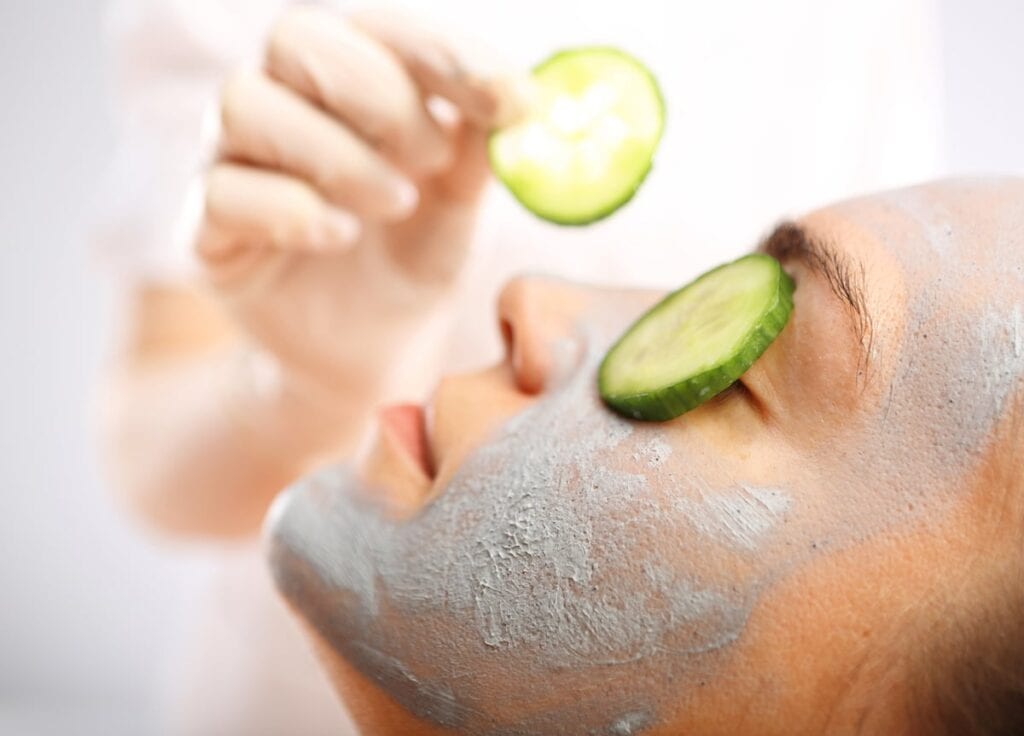Burning yourself is a painful experience. Most of us have accidentally grabbed something hot, maybe a pan that was in the oven or a hot liquid. We burn ourselves when we spend too much time in the sun. If a person is not careful, they could burn themselves working with electricity or chemicals.
The heat of the burn on our skin kills our skin cells. Our body wants to repair the damage, so it produces a substance called collagen. This protein will heal the skin over time, but it will also cause the skin to become thicken and discolor.
If you received a minor burn, it is likely that the scar has faded away with time. However, when a person experiences a severe burn, the scars can be permanent.
The size of the burn scar will vary based on the area that was affected by the heat. Some people have large scars from burns on their face and body that negatively affect their appearance.
Different Level of Burn Scars
The intensity of the heat and the length of time the heat comes into contact with your skin will determine how big and how severe the scars are. Burns are categorized by the amount of skin they affect.
A first-degree burn affects your epidermis, which is the outer layer of your skin. Your skin will become red, and you will feel a level of pain. First-degree burns typically can heal on their own and leave very little scarring.
A second-degree burn will have partial thickness. It is going to affect the epidermis and the dermis, which is the second layer of skin. You will experience skin redness, blisters, and pain. In most cases, a second-degree burn will leave behind a scar.
A third-degree burn will damage the dermis, the epidermis, and may even affect bones and tendons. There is no reddening of the skin, blisters, or pain because the burn is so severe that it completely destroys the outer layers. Nerve damage is usually experienced. A third-degree burn will turn the skin black or white. Third-degree burns will typically leave behind scars.
The treatment for a first-degree, second-degree, or third-degree burn will vary. Different levels of burn scars require different levels of treatment.

Three Types of Burn Scars
Hypertrophic scars are characterized by their purple or red color. They are raised and may feel warm when you touch them. It is common for hypertrophic scars to be itchy.
Keloid scars are shiny and hairless. They look like raised bumps or welts.
Contracture scars cause the skin to tighten. This tightening will also be seen in the tendons and muscles. These types of scars make movement difficult.
Severe Burn Level
Most first-degree burns, such as those that you might experience if you quickly grab a hot pan, can be treated at home. You may use burn cream or other treatments for the pain.
A second-degree burn is more severe. It may require you to visit a doctor. If you experience a second-degree burn, talk to your medical professional. They will probably have you lookout for signs of infection, including pus, redness, and swelling.
All third-degree burns require medical attention as soon as possible. Even a first-degree burn might require medical attention, especially if the burn does not heal within seven days. Call your doctor if the scar seems large for the area that was burned or if the scar does not fade.
How Are Burn Scars Treated?
The treatment of burn scars will vary based on the size of the burn and the location of the burn. You should not treat serious burns at home without first consulting a medical professional.
If you have a second-degree burn, your doctor may recommend using an antibiotic ointment. This ointment will aid in the healing process of your burn.
They may recommend the use of non-stick gauze. If you use a sticky gauze, every time you remove the bandage, you could open the wound. The gauze will protect your skin from contaminants that could lead to infection. It will create an environment where your skin can heal.
Third-degree burns are more serious, so they will require more intensive treatment. Your doctor will probably prescribe compression garments to be used over the burn. This will help your skin heal. Compress garments are worn 24 hours a day. You may need to use a compression garment for several weeks or even several months.
Depending on the location of the burn, you might need a skin graft. A skin graft is where healthy skin is taken from another part of your body. If your burns are extensive, the skin could be taken from another individual and be used to cover your damaged skin.
As discussed with contractures, your skin and other parts of your body might tighten. Surgery can help to release tight skin, muscles, and tendons. This could help you regain some mobility that was lost because of the injury.
With a third-degree burn, you may need the help of a physical therapist. A physical therapist will help you regain motion in the parts of your body that have tightened up because of burn scars.

Skin Grafts and Burn Injuries
Skin grafting is performed at a hospital. They do the treatment under general anesthesia. You will sleep through the entire process and will not feel any discomfort while the process is being carried out.
Skin grafts are done when there is a deep burn. Skin grafts are divided into two basic types. There are the split-thickness and a full-thickness graft. A split thickness is where the dermis and epidermis are removed. These layers are then transplanted from the donor site. Typically, these skin grafts are harvested from the back, abdomen, outer thigh, or buttocks. A split-thickness graft is used when a burn covers a large area.
A full-thickness graft is used for smaller pieces of skin. They might be used for smaller burns on visible parts of the body, like the face. The benefit of a full-thickness graft is that it blends in well with the surrounding skin. They are used when the goal is to create the best cosmetic outcome.
Recovering From a Burn
Since the treatment of burn scars varies from person to person and from burn to burn, the recovery process will vary from person to person and burn to burn.
If you have a first-degree burn, the burn should heal on its own. Within about seven days, your skin should return to normal, and there should be no scarring.
A second-degree burn will take around two weeks to heal. It could leave a scar. Or it may not leave a scar. If it leaves a scar, it is possible that the scar will fade away on its own over the next few months.
Third-degree burns are the most damaging. They almost always leave scars and may require skin grafting. A third-degree scar can take months or even years before it heals fully.
Burn Scars Complications
A slight burn will probably heal on its own with no long-term complications. There are some symptoms of burn scars, especially more severe burn scars, that indicate a complication that could require additional medical help.
Infection
When you burn your skin, its structural integrity is compromised. It creates openings that allow germs and bacteria to seep in. Minor infections are easy to treat. However, if the infection reaches your blood, it is called sepsis. This is a potentially fatal condition that needs to be treated aggressively by medical professionals.

Dehydration
Most people do not link dehydration to burns. However, your skin plays a vital role in keeping moisture in and even attracting moisture from the air. When you have a serious burn, your body loses fluid. It may lose the ability to retain fluid. If you lose too much fluid, your blood volume will become so low that there is not sufficient fluid to keep your body functioning properly.
Hypothermia
Your skin is one of the most important temperature regulating systems in your body. Perspiration and other functions help keep your body running at optimal temperatures. However, when your skin is damaged from a burn, you lose your ability to hold heat. Hypothermia, which is a rapid and dangerous drop in body temperature, can occur.
Tissue and Muscle Damage
When scar tissue develops over a burn area, it can cause your skin to tighten to where you cannot move your bones or joints. If the burn goes all the way through your skin, it can affect your muscles and damage other tissues. A doctor may need to use surgical procedures to help you regain some flexibility. A physical therapist may also work with you.
Emotional Damage
Major burn injuries can be unbelievably disturbing and upsetting for a survivor. If a person was battling depression or anxiety prior to the burn injury, it is likely that these causes of distress will continue.
Burn injuries and scars can leave a person worried about the future. There is concern about the financial impact medical bills, recovery, and loss of employment will cause.
If a person’s appearance changes because of scars or contractures, this is a major source of depression and anxiety. The situation is worse when it is coupled by continued pain as the wound is healing.
It is critical for victims of serious burns to seek emotional support from other survivors and from professionals. This can help with psychological distress. It is good to work with a caring community that understands your experience. A burn team can help you deal with the emotional aspects associated with recovery.

Conclusion
The outlook for an individual who sustained a burn varies based on how severe the burn is and how it is treated. Deep burns may require extensive treatment to minimize scarring.
To this end, it is important that the burned area be protected from the sun with sunscreen or clothing. You should expect that the burned area will be sensitive for some time. Check with your physician regularly to make sure that the burn is healing properly.
The best way to treat a scar is to prevent it. That is not always going to be possible. However, by following your medical professional’s instructions, you can take steps to minimize the chances of certain types of scars developing following a burn injury.





0 Comments